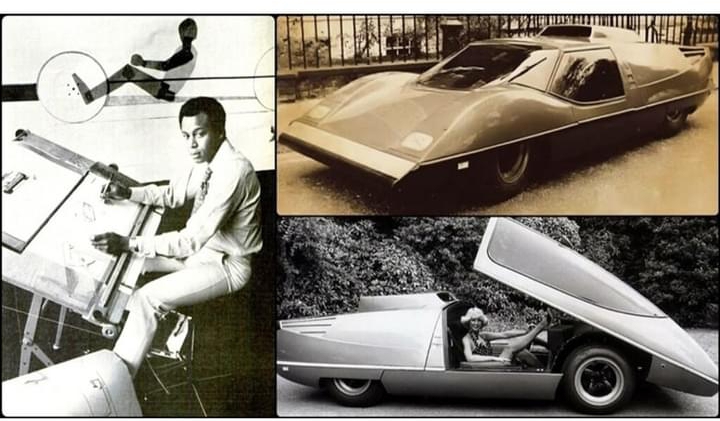The Ikenga GT is a series of three prototype GT automobile designs that were built in the United Kingdom between 1967 and 1969. The MkI, MkII and MkIII were the three styling iterations.
David Gittens is a Brooklyn-born artist and designer of African ancestry who was a staff photographer at Car and Driver magazine from 1958 to 1964. In 1964 he married and moved to London England, where he did photographic work for advertising and fashion publications. In 1967 he embarked on a career in transportation design. Among his proposed projects were a gas-powered single seat city car, an electric city car, a Reliant-based three-wheeled car, an expandable six-wheeled vehicle, a small car based on the Mini Moke chassis, and a high-performance mid-engined grand touring car that became the Ikenga GT.
Gittens bought a used McLaren chassis from Ken Sheppard. Sheppard was also to handle limited production of the car. For development Gittens turned to Charles Williams of Williams & Pritchard coachbuilders.
The car’s name is of Nigerian origin. Ikenga is a spirit often represented by a horned statue in Gittens’ ancestral Igbo culture. Ikenga represents human achievement, accomplishment, and success.
The first version of the car, later referred to as the MkI, was completed in 1967. The somewhat blocky design of the MkI was quickly followed by the restyled MkII in 1968. In addition to the revised body shape, this version received a leather interior and an accompanying set of Gucci luggage. Some advanced lighting features were also introduced with the MkII.
In October 1968, during the Earls Court Motor Show, the Ikenga MkII was displayed at the Banking Hall at Harrods. This location was chosen due to there being no provision for displaying experimental or prototype vehicles at the motor show venue. 30,000 people saw the car at the Banking Hall, including one who offered $53,000 for the prototype, and a Saudi prince who commissioned a unique version of the car to be called the “Bird of Peace” at a cost of $35,000. This special does not appear to have been built.
Gittens planned a limited run of cars. Depending on the source, he planned 100 or 150 cars, priced at £9000 or US$16,800 each.
Gittens also promoted the car in the United States. The MkII appeared on the cover of the April 1969 issue of Car and Driver magazine. In June 1969, after a year of negotiations with an American group for the US distribution rights to the Ikenga series of vehicles, a contract was approved. Later that day Charles Williams died suddenly. This was while the car was undergoing another restyling that would result in the MkIII. The car was transferred to the Radford coachworks to have the work completed with the assistance of Gary Williams and Roger Nathan, among others. The car was complete by October 1969. It appeared in an episode of the BBC series Tomorrow’s World, then was sent to France where it was displayed in Paris during the 1969 Paris Auto Show. From there the car went to Italy, where it received acclaim at the Turin Auto Show. In March 1970 the car appeared as the featured vehicle in the Swedish International Motor Show in Stockholm.
Eventually the car was returned to England (from its storage in St. Paul de Paul, France to honor A.T.A. Carnet #10477) via Copley’s Bank. It made an appearance on the UK children’s television show Blue Peter on 20th September 1976. Gittens returned to the United States and lost contact with the vehicle until it appeared in a for-sale ad in Road & Track magazine about 1980. Only one Ikenga GT was ever built.
The car was displayed at the Manx Motor Museum for some time and then was sold at auction in 1998 and again in 2008. It is believed to be somewhere in the Middle East.
Gittens would go on to use the name Ikenga again for a Catamaran (1976) and a line of gyroplanes (1985 to 1992). The 1988 Ikenga 530Z autogyro is part of the collection of the Smithsonian National Air and Space Museum in Washington DC.


